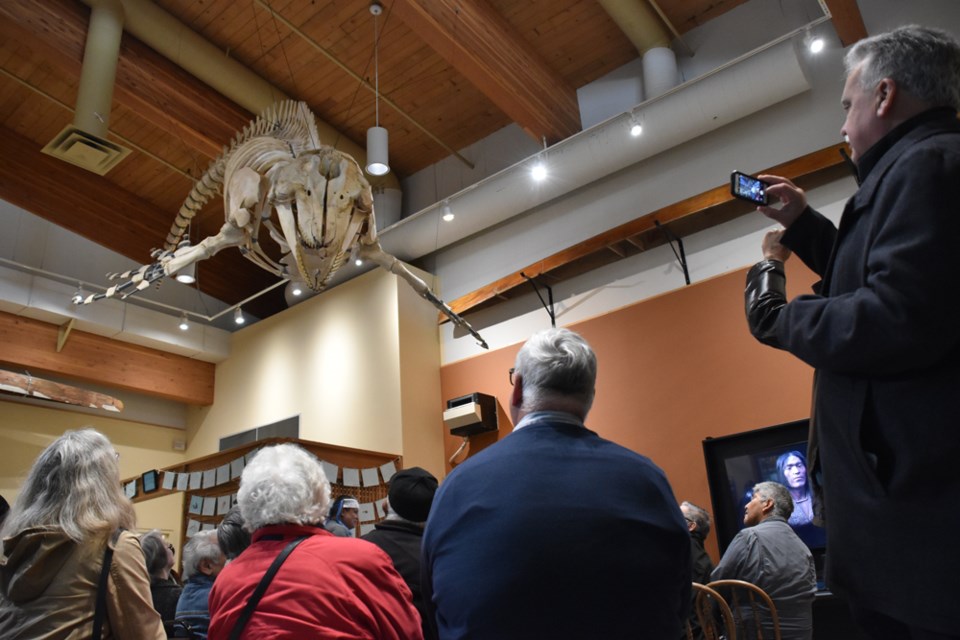“We all have a whale story,” Sid Quinn, resource management director for shíshálh Nation, told the crowd gathered for last Friday’s opening ceremony for the tems swiya Museum’s newest exhibit, which will give visitors a new story to tell.
Shíshálh Nation members, dignitaries and those involved in bringing the stalashen (Killer Whale) exhibit to life were invited to Friday’s special opening and given first glimpse of the skeleton of kwentens ?e te sinkwu, formerly known as J34 or DoubleStuf, now on display at the museum.
The body of the 18-year-old southern resident killer whale and member of J-pod was discovered in the waters near the Trail Islands off the coast of Sechelt in December 2016.
Shortly after his body was recovered, shíshálh Nation committed to articulate the orca’s skeleton and put it on display at the tems swiya Museum.
“Sid put together an amazing team on really short notice to pull all of this off,” said shíshálh Nation chief Warren Paull of Quinn’s involvement in the two-and-a-half-year project to turn the deceased whale into a museum display. Paull called the decision to fund the $80,000-$90,000 project a “no brainer.”
“They are part of our family,” said Paull. “It has huge, huge significance for us. We found a resting place for him and we can pay tribute to him.”
Calvin Craigan was among those who spoke before the museum doors were opened. He served as chief when kwentens ?e te sinkwu was discovered and described his family connection to orcas, and told two stories of how the killer whale has helped the shíshálh people.
In his speech, Sid Quinn also linked the whale’s final resting place in the museum to its cultural ties to the community, and noted that the last time his late mother, Anne Quinn, gathered with other elders, they were starting translations of killer whale stories.
“As First Nations people we have an inherent responsibility – and that’s something I take very seriously – for making sure we look after our oceans, we look after our sea creatures, we want the whales to be there for the future,” Quinn said.
Mike de Roos of Cetacea Contracting Ltd. fought back tears while describing the orca’s short life to the audience. “He was taken from his whale family early, but his body was returned to rest amongst his greater family here.”
Paul Cottrell, Pacific marine mammal coordinator for the Department of Fisheries and Oceans Canada, told the audience the loss of J34, which appeared to be the result of blunt force trauma, was illustrative of human threat. With the birth of a new calf recently, the population of southern resident killer whales is 75.
“I deal with a lot of these large whale deaths, it’s very difficult,” said Cottrell. “[It’s] very emotional.” Despite those challenges, he said “This by far was done professionally with all the folks involved, it was just incredible… it was amazing from the start.”
“I’m so impressed with the outcome given the very sad situation,” Cottrell said.
Following speeches, the speakers were gifted with blankets. Elders and dignitaries were then invited inside to see the skeleton for the first time and to hear from museum curator Raquel Joe, who summarized the exhibit, which also includes a mural by local artist Dean Schutz and an interpretive video.
The 22-foot whale skeleton hangs from the ceiling of the museum and is displayed completing its “victory circle,” a manoeuvre in which an orca swims in a tight circle at the water’s surface after successfully diving for a Chinook salmon.
The exhibit is now open to the public.
See more photos in our online galleries at www.coastreporter.net/photos-videos



